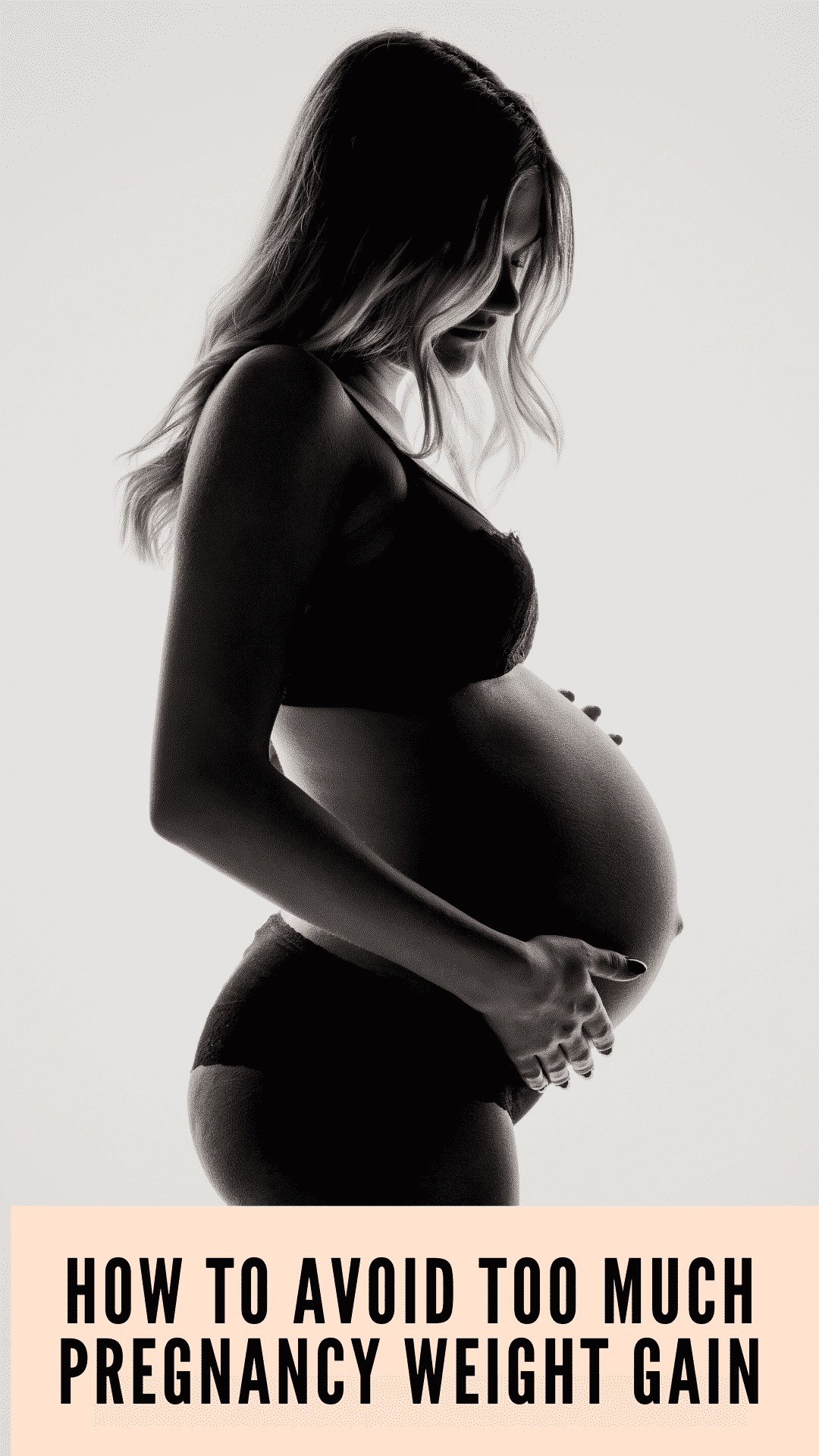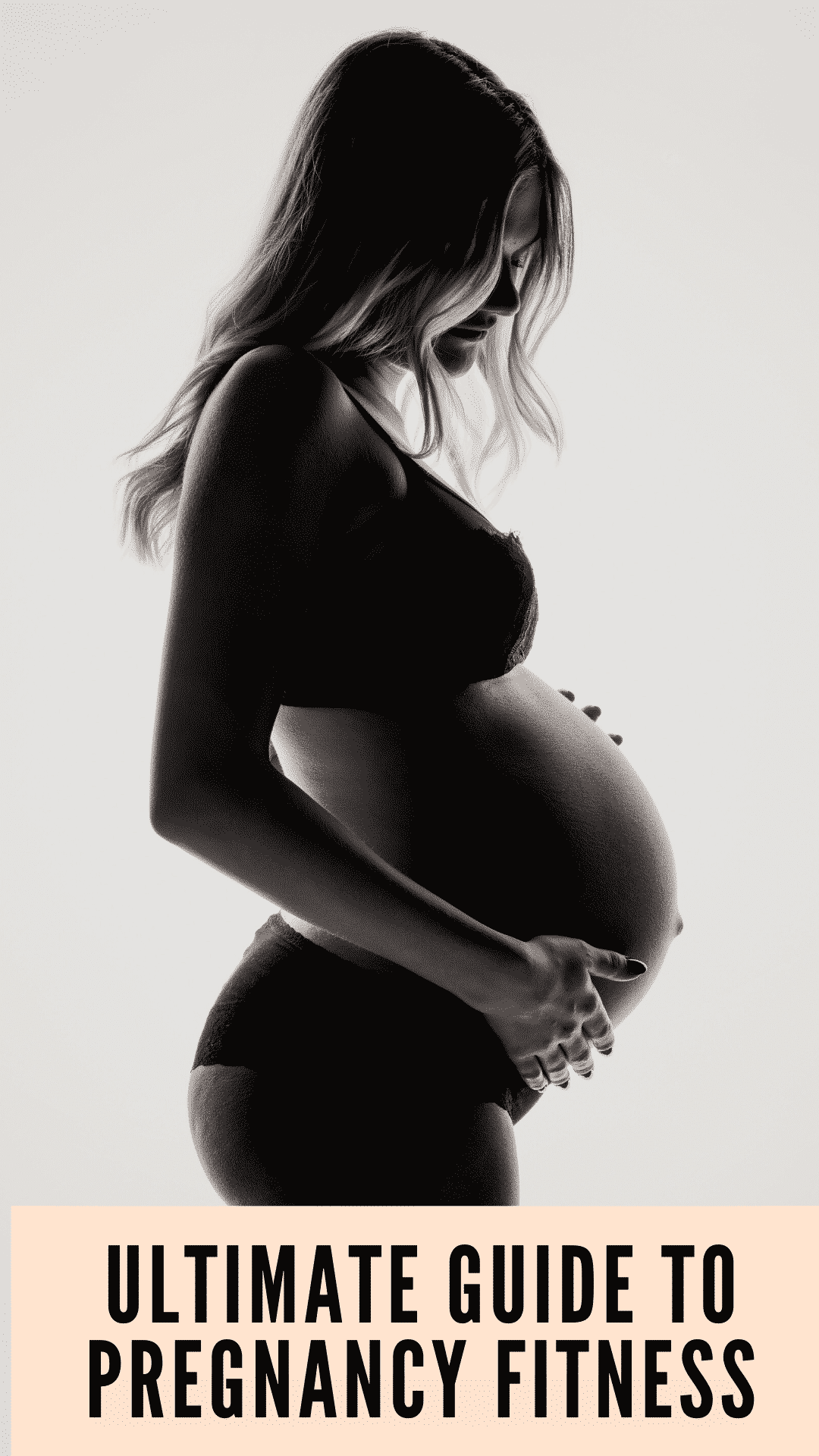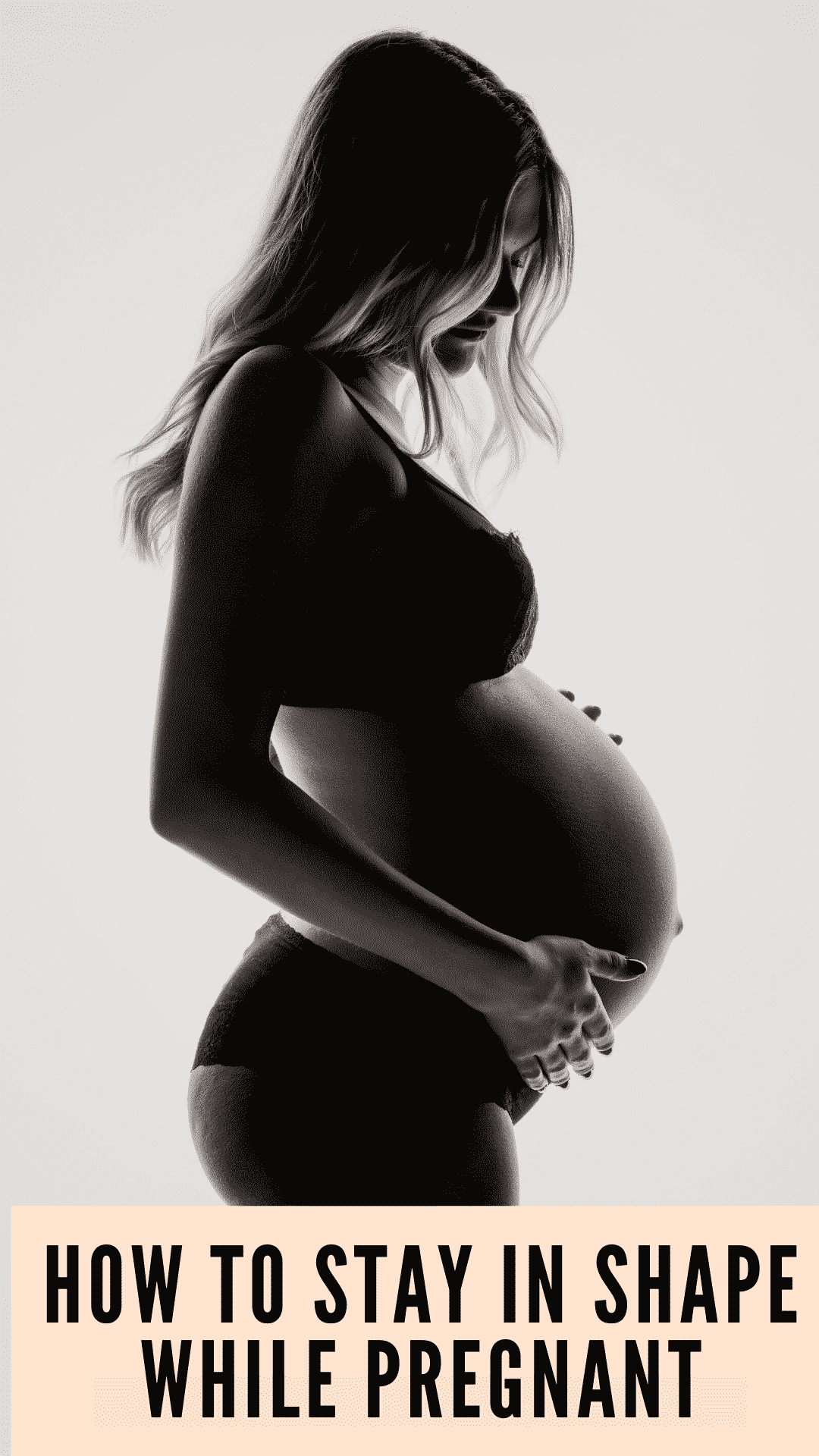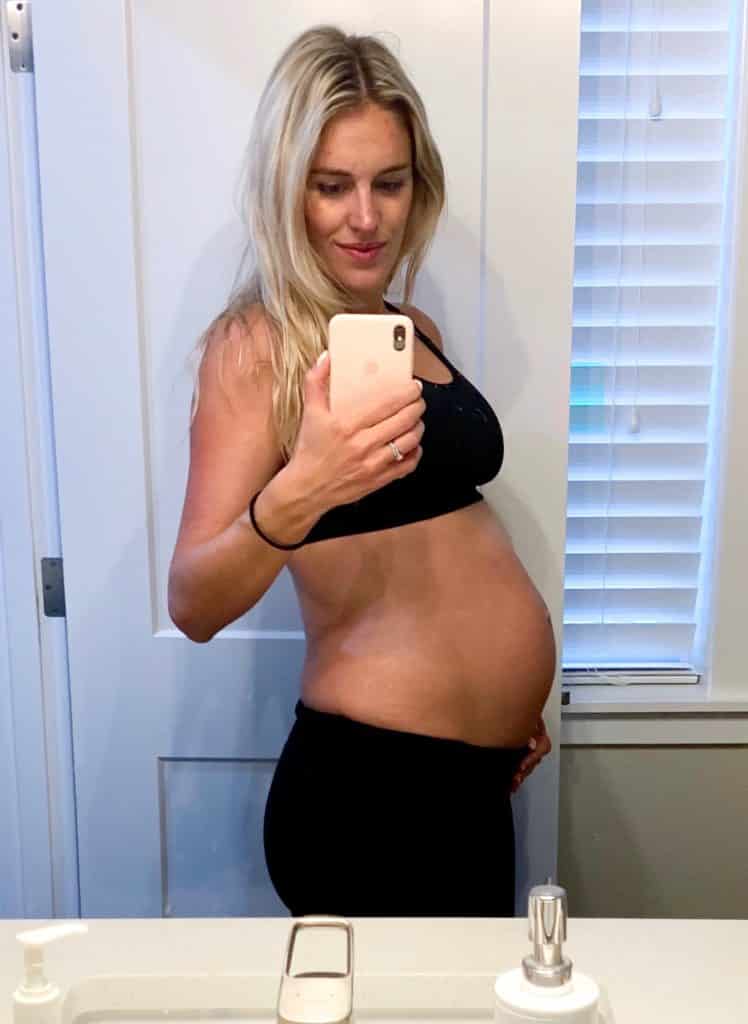One of the greatest myths surrounding pregnancy: you have to gain a ton of weight, and that you will definitely be out of shape.
I gained around 22 pounds while pregnant while eating healthy and exercising. The good habits I built up during my pregnancy allowed me to lose the baby weight and return to my pre-pregnancy weight and size around 2 weeks after Jack was born.
For those of you who are rolling your eyes thinking “girl, that’s genetics” – stop right there. Almost everyone in my family struggles with maintaining a healthy weight, and I also had my share of being on the fuller side when I was younger, before I figured out what I actually should be eating and how to best work out. Which brings me back to the topic at hand: staying in shape during pregnancy.
Before I go any further, let me say that the health and safety of you and your baby is more important than any fitness goals, and I am by no means saying that you should do anything that could risk harm. However, many women forego fitness entirely while pregnant, disregarding modern medical advice and making it much harder to get back into shape after the baby is born. Trust me, you’ve got enough crazy hormones and sleepless nights after the baby is born – if you can avoid carrying around extra weight and feeling weird about your body, all the better.
During my pregnancy, I was slightly obsessed with the idea of staying fit and keeping my body as strong, healthy and normal as possible – rather than giving myself a free pass to eat whatever I wanted. While every woman is different, all I have to compare is my own experience and I can confidently say that I felt 100% better during this pregnancy when I was eating right and exercising, compared to when I ate chocolate and camped out on the couch.
How Much Weight Should I Gain While Pregnant?
While you’re busy growing a baby, you’re obviously going to gain weight. The question is, how much weight should you gain during pregnancy?
In the U.S., medical experts estimate that anywhere between 25-35 pounds should be a target weight gain, and much of that weight is taken up by the baby and functions needed to support the baby.
Here’s a look at the weight break down (via WebMD):
Baby: about 8 pounds
Placenta: 2-3 pounds
Amniotic fluid: 2-3 pounds
Breast tissue: 2-3 pounds
Blood Supply: 4 pounds
Fat stores for breast feeding: 5-9 pounds
Uterus: 2-5 pounds
In Total: Around 25-35 pounds
Those estimates are for a woman who is pregnant with one child, who is starting out the pregnancy at a healthy, normal BMI.
Obviously you don’t gain all of that in one week, so what does healthy weight gain look like if you’re trying to stay in shape?
One way is to check out a week-by-week calculator, like this one by Baby Center. I frequently checked the calculator for a good idea of where I was tracking, and found it really helpful.
So why am I even talking about how much weight you should gain?
The picture below was taken was I was 9 months pregnant, and most of the weight I gained was taken up by the baby itself. But that is NOT how my pregnancy started out – not by a long shot.
It’s recommended to not gain hardly any weight (if any) during the first trimester (first 12 weeks), and I put on like 8 pounds. I had a major craving for grilled cheese sandwiches and cookies, didn’t work out, and honestly felt terrible. Seriously, you can ask my husband – for the first month before I knew I was pregnant I thought I had mono.
Once I checked in that handy pregnancy weight gain calculator, I realized I was on track to gain way more than the recommended weight, and that if I wanted to feel better I needed up to clean up my diet and start workout during pregnancy.
Should I Workout During Pregnancy?
To be clear – the stigma that pregnant women should just lay around and not work out is the total opposite of modern medical advice. In fact, doctors recommend that you stay active while pregnant! Exercising while pregnant can have a ton of benefits, not just for how you look and feel – but also for the pregnancy and labor process.
Benefits of Exercising During Pregnancy:
- Helps you sleep better
- Can help you have a shorter & easier labor
- Gives you more energy (despite pregnancy tiredness!)
- Improves your mood
Most experts seem to agree that starting a new, intensive workout plan after becoming pregnant is not a good idea, but if you were already active then you’re likely able to keep on doing what you’re doing (within reason). Even if you weren’t active before, adding in short walks to your daily routine can make a big difference!
Is it Safe to Work Out While Pregnant?
Short answer: yes.
That being said, you should obviously run any major fitness plans by your doctor and take any pregnancy complications into consideration. Example: if you are told you should be in bed rest, you should obviously skip a morning jog.
As another general rule, it’s recommended that you don’t start a new, intense workout regime that you have never tried before, once you’re already pregnant.
Assuming you’re healthy, have the green light from your doctor to workout and are ready to roll out the yoga mat – there are still a few modifications you’ll need to make to your workouts as your pregnancy progresses.
For those who don’t know, there’s a concern that working specifically on your abs during pregnancy can strain the muscles, which are already being stretched, and cause a condition called diastasis recti, which in practical language means you get a gap between your abdominal muscles that is more than two fingers wide and can leave your stomach with a cone-shaped protrusion after birth. Before you freak you reading that, realize that some 60% of woman end up with diastis recti, and it’s definitely fixable! It just requires some extra concentrated muscle work after birth, and it can take a few months to return to normal.
There are also a lot of ways to help avoid diastis recti:
- Avoid exercises that put a lot of pressure on your core muscles, like sit ups and planks
- Avoid heavy lifting and squat to pick up heavy objects, using your legs, rather than your back or stomach muscles.
If you’re pregnant and may be concerned that you have diastis recti, there’s a super simple way to check.
- Lay on the floor with your knees bent and your feet flat on the ground
- Lift your head and shoulders about one inch off the ground into a slight crunch position
- Put your fingers in the middle of your stomach and feel for where your abdominal muscles meet. If the gap between those muscles is more than two fingers wide, you may have diastis recti.
- If the gap is less than two fingers wide, you likely are seeing a normal muscle separation during pregnancy, which will likely heal after birth without any extra effort on your part.
Beyond diastis recti, there are also a few other fitness changes you should definitely make during pregnancy, such as avoiding contact sports or activities where there is a risk of falling (e.g. snowboarding or horseback riding).
I chose to walk a lot, which I found was easy on my joints as my stomach got bigger, but many people keep running many months into the pregnancy. If you’re an avid runner, you probably don’t need to hang up your shoes – lots of women continue running well into their pregnancy, although many find they need to stop by the third trimester.
Specific Pregnancy Workout Routine
Absolutely every single woman is different, so I can only speak to my own pregnancy. My fitness routine generally consisted of walking my dog for 6 miles every day (he’s a husky and definitely needs it!), as well as doing strength training exercises 3 days per week. I was really consistent with doing strength training exercises that work my legs and core, without putting too much pressure on my abs. For a look at some of my favorite leg exercises, check out this article.
Nutrition: What to Eat During Pregnancy
In terms of nutrition, I will be writing another post on specific nutrition requirements that I took into consideration while pregnant. However, I do want to broadly say in this post that no matter how often you work out, experts seem to agree that overall fitness is around 80% diet and only 20% exercise – meaning what you put in your mouth is by far the most important factor.
As I mentioned earlier, during the first few months of my pregnancy I didn’t watch what I ate too carefully and decided to reformat my eating to better meet the nutritional needs of being pregnant (aka eat more protein, calcium and folic acid). I also drank a TON of water (at least 10 glasses a day), which seemed to help keep me hydrated and from experiencing too much swelling, which is a problem a lot of women face while pregnant.
By eating mostly fruits, dark green vegetables, and lean protein sources, I ended up passing my gestational diabetes test with flying colors (meaning my blood sugar levels were right where they should be), and ending up with an above-average amount of iron in my blood – which my doctor was amazed by! To put that in context, pregnant women often experience a form of diabetes that affects them only during the pregnancy, and they also are often borderline anemic due to the amount of iron that the growing baby needs and takes from the mother’s body. While sometimes there is absolutely nothing you can do to avoid either of those situations, what you eat and how much you eat can make a world of difference!
While weight gain needs and fitness are completely different for every single woman, I can confidently say that in my experience it has really helped to stay fit, eat healthy and keep my muscles toned with strength training.
Do you have any questions about pregnancy fitness or nutrition? Or have you been pregnant and found exercises or foods that work for you? Comment below and let me know!
Much love,





